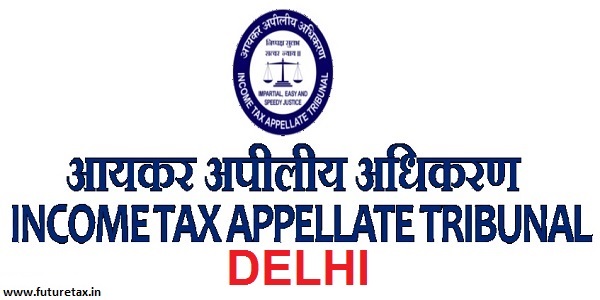
Classification of Food Emulsifier Grindsted PGE 55-M by CAAR in Tamil
- Tamil Tax upate News
- January 12, 2025
- No Comment
- 66
- 33 minutes read
In re Danisco India Pvt. Ltd. (CAAR Delhi)
Customs Authority for Advance Rulings (CAAR), Delhi, examined the classification of “Grindsted PGE 55-M,” a food emulsifier consisting of polyglycerol ester (E475). This product is used to enhance aeration, crumb structure, and emulsification in food products, especially confectionery and cakes. The product, composed of di-, tri-, and tetra-polyglycerols derived from vegetable fatty acids, is not chemically defined due to the variable composition of fatty acids and polyglycerols. CAAR noted that the absence of bromination or chlorination during production further clarified its classification.
Based on the Harmonized System of Nomenclature (HSN) and General Rules of Interpretation (GRI), CAAR ruled that Grindsted PGE 55-M is correctly classified under Tariff Item 3404 90 39. The decision aligns with Chapter 34 of the Customs Tariff, emphasizing the product’s composition and physical properties.
RELEVANT TEXT OF THE ORDER OF CUSTOMS AUTHORITY OF ADVANCE RULING, DELHI
Analysis and Conclusion
5. The Applicant is importing the products `Grindsted PGE 55-M’ for the purpose of trading. Grindsted PGE 55-M (hereinafter referred to as ‘subject product’) is a food emulsifying agent. An emulsifier enables the creation of uniformly blended products (emulsions) from ingredients which, because of fundamental differences in their physical and chemical properties are immiscible. The chemical name of the subject product is polyglycerol ester (E475). The Subject product is 100% Poiyglycerol Ester (E475). For ease of reference the description of the subject products is produced below:
| PARTICULARS | GRINDSTED PGE 55-M | [QUANTITY |
| Ingredient | Polyglycerol Ester (E475) | Approx. 100% |
5.1 E numbers: It is a system of codes used within the European Union (EU) to identify food additives. The “E” stands for “Europe” and these numbers were established by the European Food Safety Authority (EFSA) and the European Commission. E400—E499 (thickeners, stabilisers, emulsifiers)
5.2 INS Number: It stands for “International Numbering System,” are used by the Codex Alimentarius Commission. The Codex Alimentarius is a joint program of the Food and Agriculture Organization (FAO) and the World Health Organization (WHO). established to develop food standards, guidelines, and related text. In the instant case both E number and INS number are same for the subject product that is E475/INS 475.
5.3 Physical properties of subject product are as follows:
| PARTICULARS | DESCRIPTION | QUANTITY |
| Pre-dominant Ingredient | Polyglycol Ester (E477) | Approx 100% |
| Form | i Fine Powder | – |
| Physical State | Solid | I – |
| Colour | White to off-white | |
| Odor | Slightly fatty acid |
5.4 The subject product offers the following benefits:
- Ensures good aeration of cake batters
- Improves crumb structure in cakes
- Facilitates use of all-in procedures
- Is an aerating agent in confectionary systems containing fat/oil
- Secures a high overrun in confectionary
5.5 Palm oil is the raw material used for the manufacturing of the subject product. Palm oil acts as a
rich source of fatty acids. These fatty acids (stearic acid) react with Polyglycerol in an esterification reaction. The subject product contains minor amounts of mono-, di-, and triglycerides, free glycerol and polyglycerols, free fatty acids, etc.
5.6 In 35th Joint FAO/WHO Expert Committee on Food Additive (“JECFA Report”) report published in
FNP 49 (1990) and in FNP 52 (1992) has analysed Polyglycerol esters of fatty acids INS No. 475. Relevant portions of JECFA Report has been extracted below.
Definition:
Mixed partial esters formed by reacting polymerized glycerols with edible fats, oils, or fatty acids; minor amounts of mono-, di-, and triglycerides, free glycerol and polyglycerols, free fatty acids. and sodium salts of fatty acids may be present; degree of polymerization varies, and is specified by a number (such as tri) that is related to the average number of glycerol residues per polyglycerol molecule. A specified polyglycerol consists of a distribution of molecular species characteristic of its nominal degree of polymerization. By varying the proportions as well as the nature of the fats or fatty acids to be reacted with the polyglycerols. a large and diverse class of products may be obtained.
The article of commerce may be further specified as to saponification value, solidification point of the free fatty acids, iodine value, hydroxyl value and ash content.
5.7 In light of the above, it can be understood Polyglycerol Ester is not a chemically defined compound due to the presence of minor amounts of mono-, di-, and triglycerides, free glycerol and polyglycerol, free fatty acids etc., Further, by varying the proportions of fatty acids that is to be reacted with polyglycerol, many different products can be manufactured. Additionally, there is not a fixed chemical structure of the Polyglycerol Ester, as “R1. R2, and R3 ” can be different fatty acid moiety or hydrogen. Also, value of “n” can range from 1, 2 and 3.
5.8 In light of the above discussion and JCEFA Report, it can be said that the subject product is not a chemically defined compound. As per, the JECFA report Polyglycerol Ester of fatty acids is waxy in appearance. Relevant portion of report has been provided below:
Description: Light yellow to amber. oily to very viscous liquids: light tan to medium brown, plastic or soft solids: and light tan to brown. hard, waxy solids.
5.9 Coming to Classification of GR1NDSTED PGE 55-M, the Tariff is aligned, up to the 6-digit level,
with the Harmonized System of Nomenclature (“HSN”) issued by the World Customs Organization (`WC0′). It has been held by the Hon’ble Supreme Court in the case of Collector of Customs, Bombay Vs. Business Forms — 2002 (142) ELT 18 that the HSN Explanatory Notes aid in the interpretation of the Headings of the Tariff and may be used as a safe guide for the same.
5.10 The classification of the goods imported into India is to be determined based on the General Rules of Interpretation (hereinafter referred to as the “GRI”) set out in the Tariff. As per Rule 1 of the GRI, classification of the imported products shall be determined according to the terms of the headings and any relative Section or Chapter Notes and, provided such headings or Notes do not otherwise require, according to the remaining Rules of the GRI.
5.11 The product in question i.e., Grindsted PGE 55-M is food emulsifying agent. It is is a polyglycerol ester made from edible, refined vegetable fatty acids and in which the polyglycerol moiety is mainly di-, tri, and tetra glycerol.
5.12 Given that it has a wax character, it may be classified under Chapter 34, which covers, inter-alia, Artificial Waxes and Prepared Waxes. Under Chapter 34, the relevant customs tariff heading (“CTH”) that is most relevant to the classification of the subject product is CTH 34.04, which concerns Artificial waxes and prepared waxes
5.13 Before examining the classification of the subject product under CTH 3404, it is relevant to visit the Notes to Chapter 34. As per Note 1 to Chapter 34 “separate chemically defined compounds” are excluded
(1) This Chapter does not cover
(a) ******
(b) Separate chemically defined compounds; or.
(C) *******
5.13.1 Additionally, as per Note 5 to Chapter 34, “artificial waxes and prepared waxes’ applies to:
(a) Chemically produced organic products of waxy character. whether or not water-soluble.
(b )*****
(c) ****
5.13.2 Further, the HSN Explanatory Notes to Heading 3404 provide for its applicability as under:
This heading covers artificial waxes (sometimes known in industry as “synthetic waxes”) and prepared waxes, as defined in Note 5 to this Chapter, which consist of or contain relatively high molecular weight organic substances and which are not separate chemically defined compounds. These waxes are :
(A) Chemically produced organic products of a waxy character, whether or not water-soluble. Waxes of heading 27.12, produced synthetically or otherwise (eq., Fischer-Tropsch waxes consisting essentially of hydrocarbons) are however excluded. Water-soluble waxy products having surface-active properties are also excluded (heading 34.02).
(B) *****
(C) *****
The waxes of paragraphs (A), and (C) above must have:
(1) a dropping point above 40 °C; and
(2) a viscosity, when measured by rotational viscometry, not exceeding 10 Pa.s (or 10,000 cP) at a temperature of 10 degrees C above their dropping point.”
5.14 On a combined reading of Note 5 (a), Note 1 (b) to Chapter 34 and the HSN Explanatory Notes to heading 3404, the following essential requirements needs to be fulfilled in order to classify a product under the said heading:
a. The product must not be a separate chemically defined compound;
b. The product must be chemically produced organic product;
c. The product must not be covered within the scope of CTH 271;
d. The product must have waxy character;
e. The product must have a drop melt temperature of above 40°C;
f. The viscosity of the product must not exceed 10 Pa.s at 10°C above the drop melting point.
5.14.1 The physical and chemical characteristics of the subject product are analysed against each of the above conditions, as below.
I The subject product is not a separate chemically defined compound
5.14.1.1 The term separate chemically defined compounds has been defined in the Explanatory Notes to the Harmonized System of Nomenclature published by the World Customs Organization (hereinafter to be referred to as “Explanatory Notes”) for Chapter 29 (Organic Chemicals). For ease of reference the relevant definition is reproduced below: (A) Chemically defined compounds: (Chapter Note 1)
A separate chemically defined compound is a substance which consists of one molecular species (e.g., covalent or ionic) whose composition is defined by a constant ratio of elements and can be represented by a definitive structural diagram. In a crystal lattice, the molecular species corresponds to the repeating unit cell.
As already mentioned, JECFA Report provides that the subject product is not a chemically defined compound due to the presence of residual mono- and diglycerides and glycerol.
II. Subject product is waxy in nature
5.14.1.2 Additionally, the JCEFA Report also provides that the subject product is waxy in character. In light of the above, it can be understood that the subject product’s final composition and structure cannot be determined due to the presence of different fatty acid moieties attached, and the subject product has a waxy character.
III. The product must be chemically produced organic product
5.14.1.3 As per the manufacturing process of the subject product, it is fatty acids (stearic acid) react with Polyglycerol in an esterification reaction. The resulting contains a carbon-hydrogen bond, which is characteristic of an organic product. Hence, the subject product is a chemically produced organic product
IV. The product must not be covered within the scope of CTH 2712
5.14.1.4 CTH 2712 covers Petroleum Jelly, Paraffin Wax, Microcrystalline Petroleum Wax or other mineral waxes. A simple analysis shows that the subject product is not any of these waxes. Hence, the subject product is not covered within the scope of CTH 2712.
V. Other conditions
5.14.1.5 A mentioned above and on physical examination of the subject product shows that it has a waxy character. The Applicant has confirmed that the subject product has a drop melt temperature of above 40°C. The Applicant has also confirmed that the subject product has a viscosity that does not exceed 10 Pa.s at 10°C above the drop melting point.
5.14.2 The fulfilment of above criteria by the subject products is discussed herein below:
| Requirement under CTH 3404 | Properties of the subject product |
| The product must be chemically produced | Esterification of fatty acid with Polyglycerol to form Polyglycerol Ester. |
| The product must be an organic product other than separate chernically defined compounds defined under Chapter Note 1 to Chapter 29. | The product is not a separate chemically defined compound given in Chapter Note 1 to Chapter 29. |
| The product must not be covered within the scope of heading 2712. | The subject product is not covered under CTH 2712 as it is not in the nature of Petroleum Jelly, Paraffin Wax, Microcrystalline Petroleum Wax or other mineral waxes mentioned under CTH 2712. |
| The product must have waxy character. | The subject products have a waxy appearance. |
| The product must have a dropping point temperature of above 40 ‘C. | The subject product have a dropping point above 40°C . |
| The viscosity of the product must not exceed 10 Pa.s at 10 °C above the drop melting point. | The subject product’s viscosity does not exceed 10 Pa.s at 10 °C above the drop melting point |
5.14.3 In view of the above, as the subject product fulfils all the conditions mentioned in Note 1(b), and Note 5 to the Chapter 34, hence the subject product merits classification under CTH 3404. Now, coming to the 8-digit classification, reliance must be placed on GRI Rule 6 which states that “the classification of goods in the sub-headings of a heading shall be determined according to the terms of those sub-headings and any related sub-heading Notes and, mutatis mutandis. to the above rules, on the understanding that only sub-headings at the same level are comparable. For the purposes of this rule the relative Section and Chapter Notes also apply, unless the context otherwise requires”.
5.14.4 Therefore, upon application of GRI Rule 6 read with GRI Rule 1, the classification of subject products must be determined according to the terms of sub-headings. In view of the above, reference must be made to the description mentioned at sub-heading level. It is also pertinent to mention that as per GRI, descriptions of the goods provided under ”-‘(single dash) are first to be considered for sub-classification under a heading first, before proceeding to further classify under “- 2 (double dash). Articles whose description are preceded by a “—” (triple dash) or “—-” (quadruple dash) are sub-classifications of the immediately preceding single dash or double dash, as the case may be.
5 14.5 Therefore, the classification of the subject goods must be first determined at the single-dash level. In this regard. it is evident that CTH 3404, has been sub-divided into:
| CTH | I Description
|
Unit | Rate of Duty |
| (1) | (2) | (3) | (4) |
| 34042000 | I – Of poly glycol) (oxyethylene) (polyethylene | Kg | 10% |
| 340490 | I – Other |
|
5.14.5.1 The subject product is not made up of Polyethylene glycol (PEG). Accordingly, the subject product will be classified under the residuary entry, i.e., CTSH 3404 90 which reads as “Other”. Now, upon perusal of the single-dash entry- “Other. The entry is sub-divided into the following:
| CTH Description | Unit | Rate of Duty | |
| (1) (2) | (3) | (4) | |
| 34090 | -Other | ||
| 34049010 | —Sealing wax (including bottle sealing wax) in sticks, cakes or similar forms | Kg | 10% |
| 34049020 — Polyethylene wax | Kg | 10% | |
| —Artificial waxes (including water soluble waxes ) prepared waxes , not emulsified or containing solvents | |||
| 34049090 I —Other | Kg | 10% | |
5.14.5.2 Basis the understanding of the facts and the analysis discussed so far, it is clear that 34049010 and 34049020 are excluded Now moving to the next — dash i.e. Artificial waxes (including water-soluble waxes) prepared waxes, not emulsified or containing solvents”. The subject product is in the nature of artificial wax; not soluble in water. Further, the product in is as imported form is neither emulsified nor contains solvents. Accordingly, the subject product appears to fall within the scope of “Artificial waxes (including water-soluble waxes) prepared waxes, not emulsified or containing solvents”.
5.14.5.3 The said entry is further sub-divided under:
| CTH | Description | Unit | Rate of Duty |
| (1) | (2) | (3) | (4) |
| 34049031 | —-Poly brominated biphenyls | Kg | 10% |
| 34049032 | —-Poly chlorinated biphenyls | Kg | 10% |
| 34049033 | —-Poly chlorinated terphenyls | Kg | 10% |
| 34049039 | —-Other | Kg | 10% |
5.15 The Comments of the Port Commissionerate is the product appears to be either classifiable under CTH 38.24 or 34.04 depending on whether it meets the character of artificial waxes or otherwise. The compliance of the imported product to the various explanatory notes to CTH 34.04 need to be examined.
5.16 Considering the subject product is pre-dominantly composed of Polyglycol Ester and has a waxy nature it shall be classified under Chapter 34, which covers, inter elle, “Artificial Waxes and Prepared Waxes” under Customs Tariff Heading (hereinafter referred to as “CTH”) 3404. Further, relevant Chapter Notes and Harmonized System of Nomenclature Explanatory Notes (hereinafter referred to as “HSN EN”) which have been held to be a safe guide for the determination of the correct classification in a catena of judgments. are extracted below for ready reference:
“Chapter Note 1This Chapter does not cover:
(a) ……
(b) separate chemically defined compounds; or
(c)……..
“Chapter Note 5 In heading 3404, subject to the exclusions provided below, the expression “artificial waxes and prepared waxes” applies only to:
(a) Chemically produced organic products of a waxy character, whether or not water-soluble;
(b)……………..
(c) products of a waxy character with a basis of one or more waxes and containing fats, resins, mineral substances or other materials.. “
HSN EN to CTH 3404:
This heading covers artificial waxes (sometimes known in industry as “synthetic waxes”) and prepared waxes, as defined in Note 5 to this Chapter; which consist of or contain relatively high molecular weight organic substances and which are not separate chemically defined compounds. These waxes are
(A) Chemically produced organic products of a waxy character, whether or not water-soluble. Waxes of heading 27.12, produced synthetically or otherwise (eq. Fischer-Tropsch waxes consisting essentially of hydrocarbons) are, however, excluded. Water-soluble waxy products having surface-active properties are also excluded (heading 34.02).
(B)………
(C) Products of a waxy character with a basis of one or more waxes and containing fats, resins, mineral substances or other materials. Unmixed animal or vegetable waxes, whether or not refined or coloured, are, however, excluded (heading 15.21). Unmixed mineral waxes or mixtures of mineral waxes, whether or not coloured are also excluded (heading 27.12) ..
The waxes of paragraphs (A), and (C) above must have:
(3) a dropping point above 40 °C; and
(4) a viscosity, when measured by rotational viscometry, not exceeding 10 Pa.s (or 10,000 cP) at a temperature of 10 degrees C above their dropping point.
Apart from the exclusions mentioned above, the heading does not cover :
(f) Mixtures of mono-, di- and tri-, fatty acid esters of glycerol, not having the character of waxes (heading 38.24).”
5.17 Each of the above-listed conditions are dealt with specifically as under:
| The subiect product is not a Separate Chemically Defined Compounds The product must be chemically produced organic product
|
The presence of residual mono- and diglycerides and glycerol as is outlined in the JECFA Report and bars the subject product from the scope of the definition of a Separate Chemically Defined Compound as prescribed under HSN EN to Chapter 29. |
| As distilled hereinabove, the manufacturing process of the subject product involves a chemical reaction i.e. esterification reaction of fatty acid with Polyglycol Ester.
The resultant product contains a carbon-hydrogen bond, which is a characteristic of that product being an organic product. Reliance in this regard is placed on the definition of an “organic compound” as outlined by Britannica Technical Dictionary3 which is extracted below: “organic compound, any of a large class of chemical compounds in which one or more atoms of carbon are covalently linked to atoms of other elements, most commonly hydrogen, oxygen, or nitro_gen.” |
|
| The product must not be covered within the scope of CTH 2712 | CTH 2712 covers Petroleum. Jelly. Paraffin Wax. Microcrystalline Petroleum Wax or other mineral waxes–. A bare perusal of the terminology of the CTH 2712 is apparent to conclude that subject product is out of the scope of the waxes covered by CTH 2712. |
| The subject product is waxy in nature | The subject product is waxy in nature. Reliance for the same is placed on the JECFA Report. |
5.18 in light of the above, it is concluded that the subject products fulfil all the conditions set forth by the combined reading of Chapter Note 1(b) and 5(a) to Chapter 34 and the HSN EN to be adequately covered under CTH 3404. Further, as the subject products have not been subjected to bromination or chlorination during its manufacturing process and neither does the subject products contain bromine or chlorine in its ‘as-imported’ condition The subject products are thus, not classifiable under CTIs 3404 90 31, 3404 90 32. 3404 90 33 and are therefore, correctly classifiable under CTI 3404 90 39.
6.a. Question: Whether the products in question in the present application are classifiable under Tariff Item 3404 90 39?
Answer: Yes
b. Question: If the answer to the above question is in the negative, then what would be the correct classification of the products mentioned above under the Customs Tariff of India? Answer: Not Applicable
- I, rule accordingly.
(Samar Nanda)
Customs Authority for Advance Rulings




